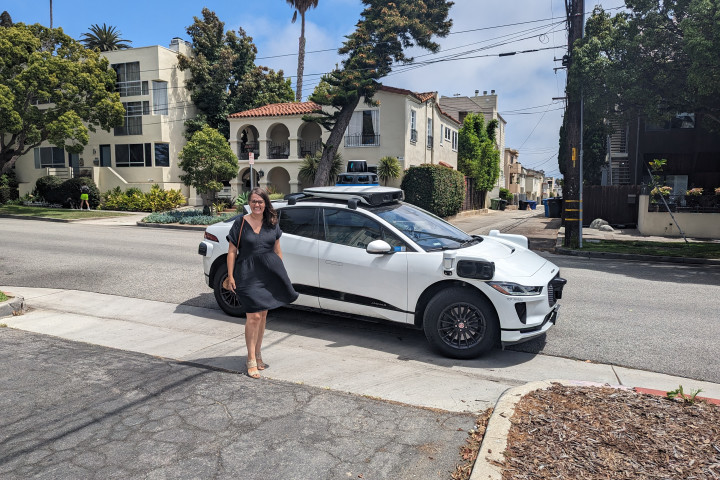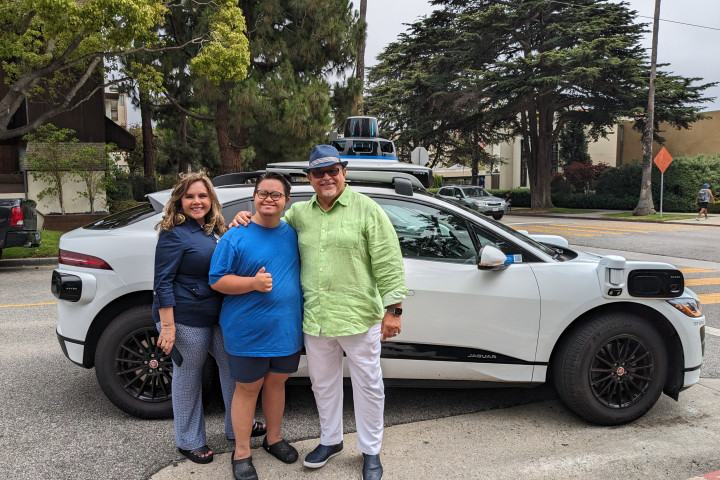Bicycling in the Time of COVID
March 31, 2021
Partnered with California Bicycle Coalition

As people across the U.S. sought out socially distanced outdoor recreation in 2020 during the global COVID-19 pandemic, a cycling boom ensued. The year saw unprecedented bike sales with shops selling out completely as new and experienced riders alike took to the streets.
Many cities designated some of their streets as “slow streets” with restrictions on through car traffic and invitations to people to walk and bike. The California Bicycle Coalition (CalBike) produced “How to Create Slow Streets During the Pandemic,” to encourage residents and city leaders to expand slow streets in their communities. Some cities quickly implemented safety improvements using low-cost temporary materials. CalBike’s thorough “Quick-Build Bikeway Design Guide” documents the process and materials to help more cities implement low-cost safety improvements. While these were emergency responses to an unprecedented situation, they have been extraordinarily popular.
“It proved the point we’ve been making all along: that despite inevitable controversy that comes with safety improvements that might slightly restrict car traffic, when people see the benefits, they’re no longer controversial. People love the improvements, and want more,” said Dave Snyder, CalBike’s Executive Director.
Traffic danger continues to be a national concern
At the same time, traffic fatalities increased as many drivers took emptier roads as a license to speed. While the National Safety Council estimates that the overall number of US traffic fatalities increased by 7% in 2020, the fatality rate will be even larger, as the total miles driven decreased during the 2020 Covid year.
Cyclists are put at risk by speeding drivers, who may also be distracted or driving under the influence. Cycling fatalities on US roads have been increasing since 2010, with California and a few other states accounting for a disproportionate share of the fatalities. Last year was no exception.
According to the National Safety Council, the total number of fatalities on US roads was 36,300 in 2018 and 1,100 of those (3%) were cyclists and other pedal-powered road users.
The most important way to reduce the danger is to remake our streets into safer places for people to walk and bike. But people can also protect themselves with safer decisions when they choose to bike.
So what should cyclists – both newcomers and experienced pedalers – keep in mind when it comes to cycling safety in the time of COVID-19? How can cyclists learn to bike confidently while staying safe and happy?
Resources for cyclists
CalBike has compiled a compendium of resources for cycling in the time of COVID-19. The tips are especially geared toward Californians but could be useful for anyone.
Cycling FAQs
CalBike has compiled a list of questions they frequently receive from new California cyclists, such as:
- How safe is it to ride outside ?
- Do I need to wear a mask when I’m on my bike?
- Where can I get my bike fixed?
- Where can I get a used bike for cheap or free?
- Where can I get a new bike?
- How do I bike responsibly during the COVID-19 pandemic?
- Is it safe to use bike share or shared scooters during the coronavirus outbreak?
- How can I support getting better bike infrastructure in my community, or encouraging others to ride?
- Can you give some tips for beginning bikers?
See CalBike’s answers to the questions people most frequently ask CalBike.
Bicycling for Beginners
CalBike has also compiled a list of resources from the web to help people learn how to cycle at any age, or simply become more comfortable cycling outdoors. Those resources include free online classes hosted by CalBike’s partners; videos about stopping and starting, shifting, changing lanes, and choosing a bike to fit; advice for teaching children to ride; tips for preventing theft; inspirational stories; and more.
View the resources.
Happy Biking Tips
How can people get the most out of cycling during the global coronavirus pandemic? CalBike has put together some useful tips. They’ve addressed questions about how to assess whether old bicycles are still roadworthy, how to bike with children, whether an e-bike could make life easier, and even how to get a donated bike if you can’t afford one right now.
See CalBike’s happy biking resources.
Bike Match and Getting Involved
CalBike is also sharing information about how Californians who have a bike they no longer ride can ensure their bike gets put to good use, such as by donating it to an essential worker or giving it to someone who wants to start cycling but may not have the means. See CalBike’s list of Bike Match programs. CalBike is also empowering would-be cycling advocates to get involved with a list of local bicycle coalitions in communities across California.
The Cycling Future
As new cyclists continue to take to the roads, the bike boom shows no signs of slowing down. A proliferation of Slow Streets programs across the country and renewed interest in retrofitting streets to make them safer mark a clear turning point. Our streets should be places where everyone, whether fit or not, old or young, fearless or concerned, can feel safe and confident enjoying a bike ride on the way to their destination.
New vehicle technologies could also help usher in a time when cyclists don’t have to worry about speeding, distracted, or impaired drivers. For example, fully autonomous driving company Waymo has emphasized it is working to design a technology that allows cyclists and fully autonomous vehicles to coexist on streets that are safer for everyone.
Waymo’s fully autonomous driving technology equips the vehicle to see up to three football fields away, in 360 degrees, during both day and night. It is designed to be constantly vigilant, unlike distractible human drivers. Fully autonomous vehicles can be programmed to obey speed limits, avoid streets prioritized for people on bikes, and wait patiently behind a bike when necessary. Making streets safer for people biking will make it easier for people to get around without a car, and make our neighborhoods and communities better for everyone.
For more information on cycling in California, visit calbike.org.
Sign Up
Join us in the most important conversations about how autonomous driving technology may shape the future of safety, mobility, community, and society.


